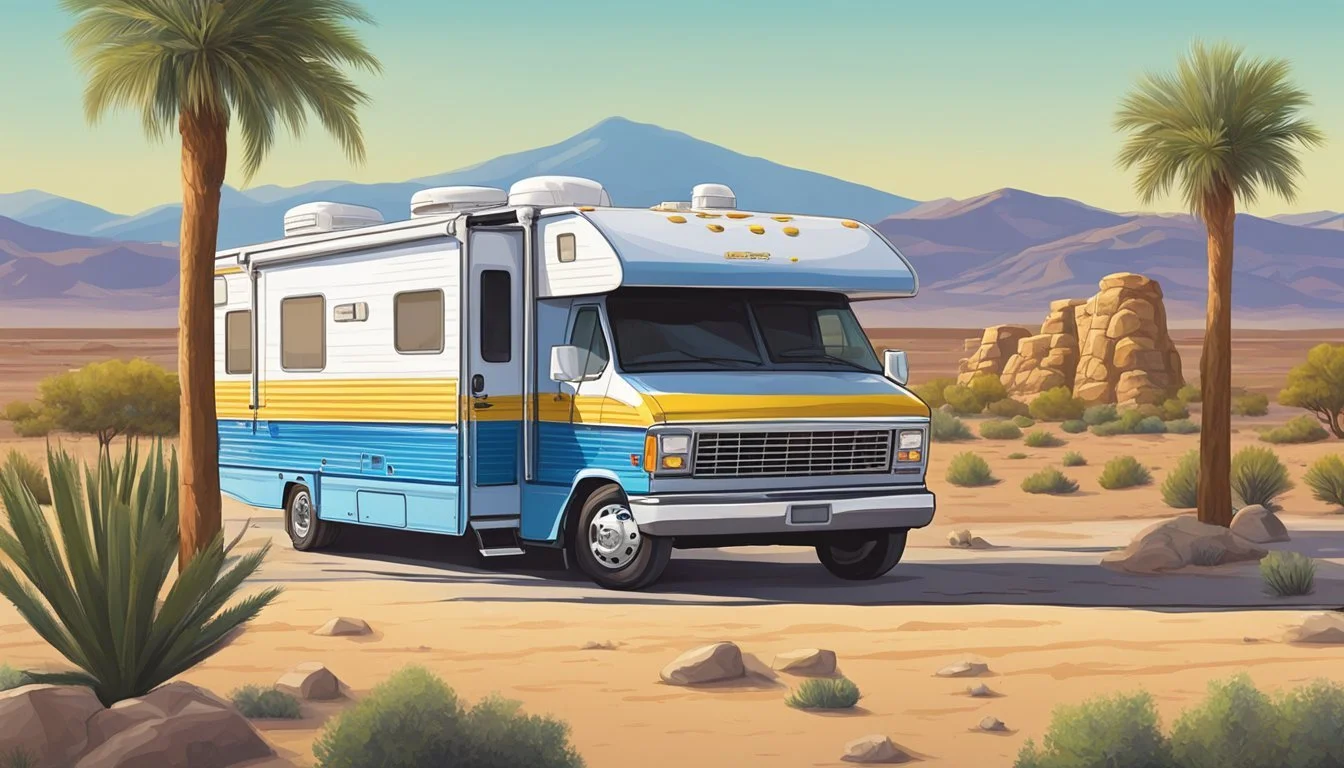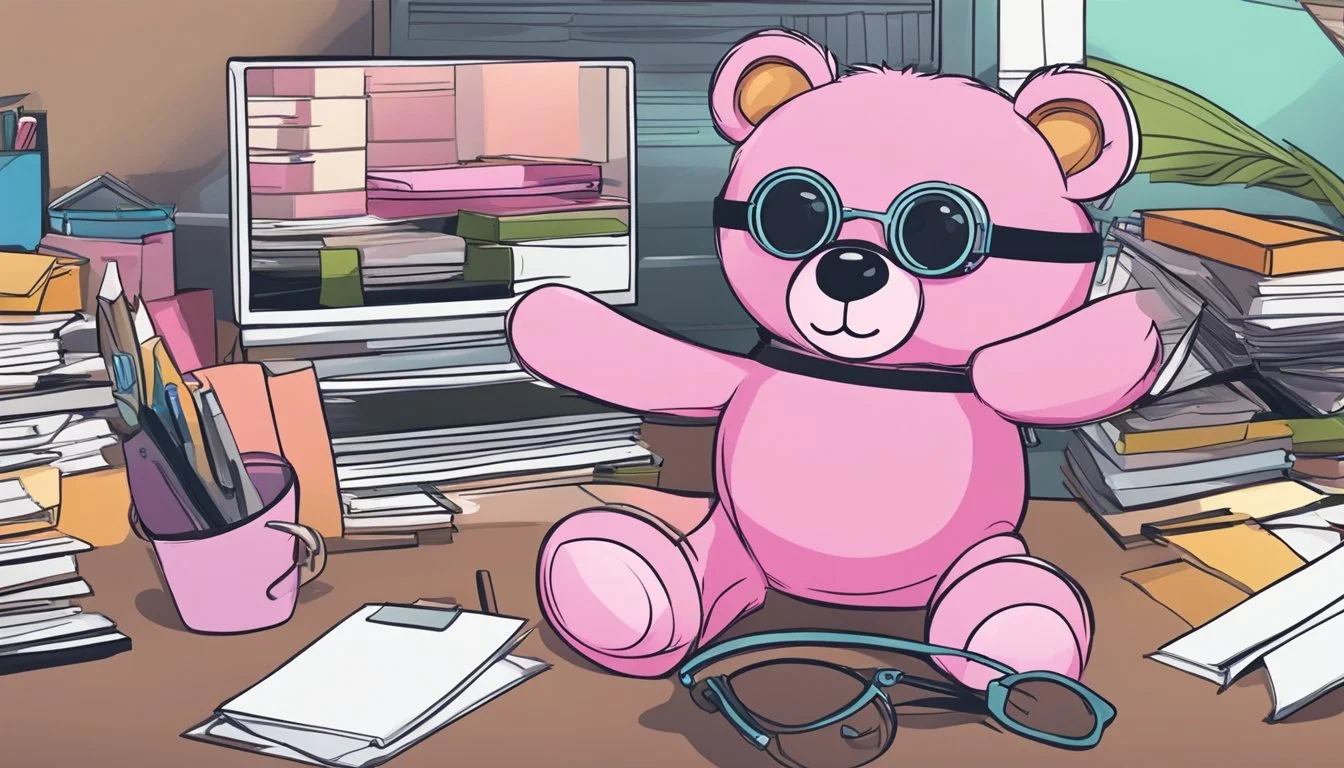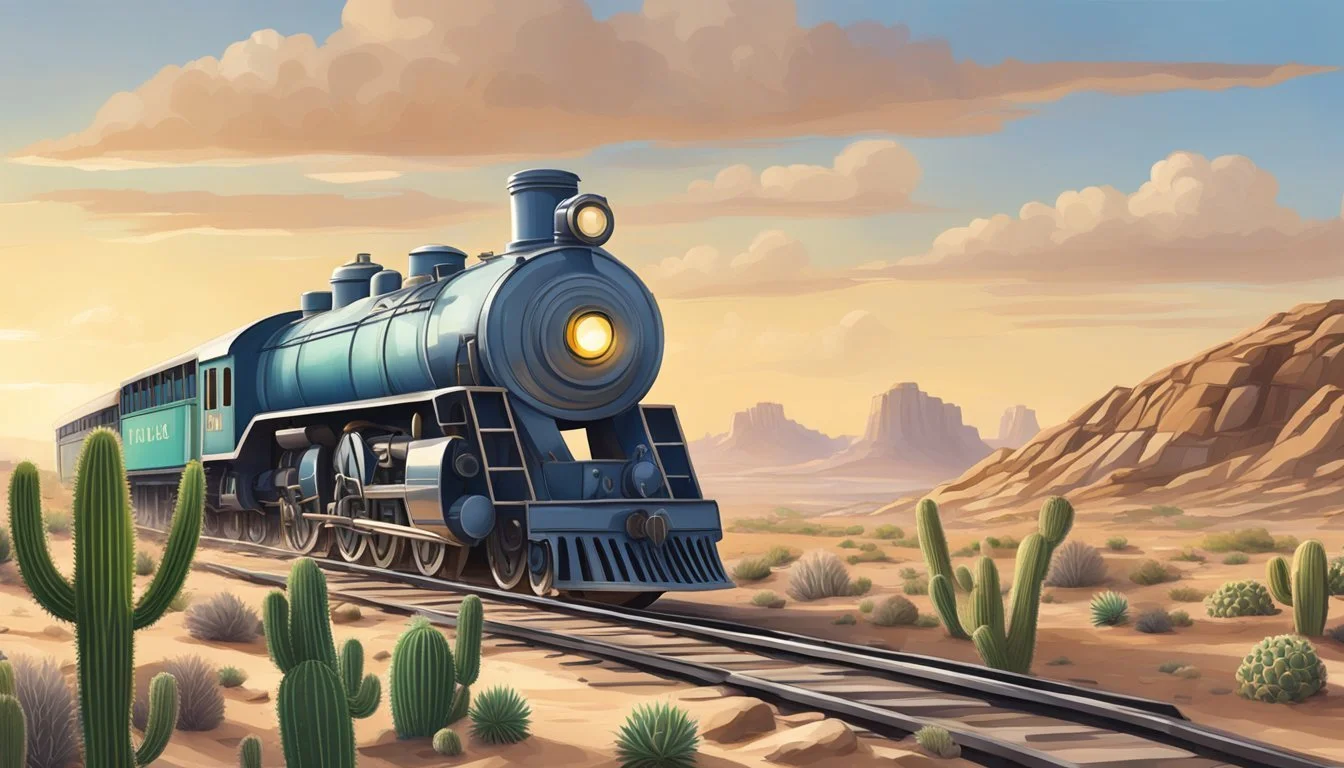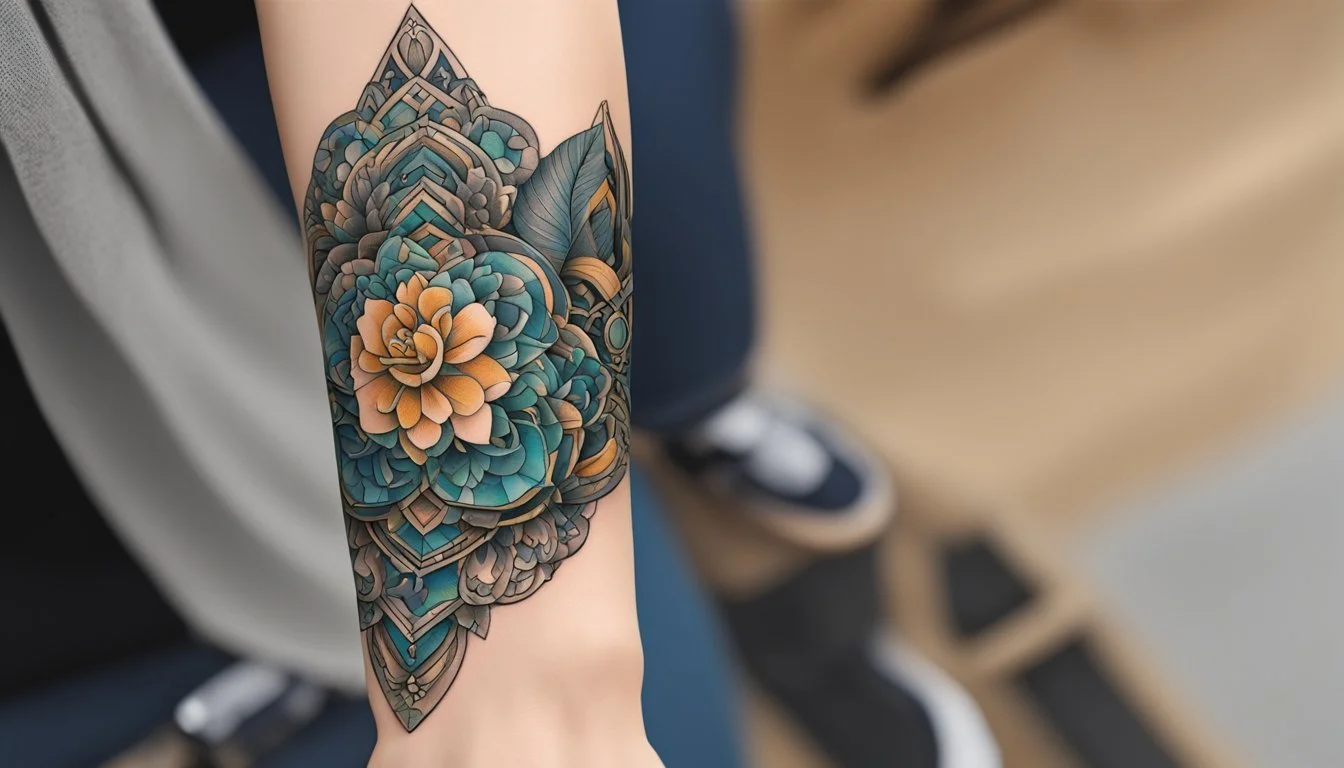11 Breaking Bad Callbacks That Rewarded Attentive Viewers
Hidden Gems for Eagle-Eyed Fans
Breaking Bad captivated audiences with its intricate storytelling and attention to detail. The show's creators skillfully wove a complex narrative tapestry, planting seeds for future plot developments and rewarding observant viewers with subtle callbacks to earlier events.
These callbacks not only enriched the viewing experience but also encouraged fans to rewatch episodes, seeking hidden connections and foreshadowing. From visual cues to dialogue echoes, Breaking Bad's use of callbacks demonstrated the meticulous craftsmanship that went into creating this critically acclaimed series. The show's ability to reward attentive viewers contributed significantly to its cult status and enduring popularity.
1) Jesse's RV parked at Los Pollos Hermanos
The Fleetwood Bounder RV, affectionately dubbed "The Krystal Ship" by Jesse Pinkman, played a pivotal role in Breaking Bad. It served as Walt and Jesse's mobile meth lab, allowing them to cook their product in remote locations.
In a clever callback, attentive viewers spotted Jesse's RV parked outside Los Pollos Hermanos restaurant. This subtle detail connected two major elements of the show's storyline.
Los Pollos Hermanos, owned by drug kingpin Gus Fring, was a front for his methamphetamine distribution operation. The presence of the RV in the restaurant's parking lot hinted at the growing entanglement between Walt and Jesse's small-scale operation and Fring's larger criminal enterprise.
This visual cue rewarded observant fans by foreshadowing the characters' deepening involvement with Fring's organization. It also highlighted the show's attention to detail and its skill in weaving together various plot threads.
The RV's appearance at Los Pollos Hermanos served as a reminder of how far Walt and Jesse had come from their early days of cooking in the desert. It symbolized the expansion of their operation and the increasing dangers they faced.
2) The pink teddy bear's eye in Saul's office
The pink teddy bear's eye made a surprising reappearance in Saul Goodman's office during Breaking Bad. This subtle callback rewarded attentive viewers who recognized its significance from earlier seasons.
The eye originally belonged to a stuffed animal that fell into Walter White's pool after the Wayfarer 515 plane crash. It served as a haunting reminder of the consequences of Walt's actions throughout the series.
Keen-eyed fans spotted the eye sitting on a shelf in Saul's office during later episodes. This small detail suggested that Saul had acquired the eye, possibly through his connections to the aftermath of the plane crash.
The presence of the eye in Saul's office added depth to his character. It hinted at Saul's awareness of the wider implications of his and Walt's criminal activities, beyond just the immediate legal concerns.
This callback demonstrated the show's attention to detail and commitment to narrative continuity. By incorporating such a small but meaningful object, the writers created a rich tapestry of interconnected events and symbols.
3) Gale's karaoke video
Breaking Bad fans were treated to a memorable callback featuring Gale Boetticher's karaoke video. This quirky clip first appeared in season 4, episode 4, "Bullet Points," when Hank showed it to Walt during a family gathering.
The video showcased Gale enthusiastically singing Peter Schilling's "Major Tom (Coming Home)" in a karaoke booth. It provided a lighthearted moment amidst the show's intense plot developments and offered insight into Gale's personality beyond his role as a chemist.
This karaoke performance resurfaced later in the series, serving as a poignant reminder of Gale's tragic fate. The contrast between his innocent, goofy demeanor in the video and his untimely death highlighted the show's exploration of moral consequences.
The callback rewarded attentive viewers by connecting earlier moments with later events. It also added depth to Gale's character, emphasizing the human cost of Walt's actions and the far-reaching consequences of his choices in the drug trade.
4) Saul's office decor matching a past case
Attentive viewers of Better Call Saul were rewarded with a clever callback to an earlier episode when Saul Goodman's office decor was revealed. The vibrant and welcoming design of Saul's law office mirrored a suggestion made by Kim Wexler in a previous season.
This interior design choice reflected Jimmy McGill's transformation into the flamboyant Saul Goodman persona. The office featured bright colors and eye-catching decorations, creating a stark contrast to the more subdued legal offices typically seen in Albuquerque.
The layout included a barrier for Francesca, Saul's receptionist, which served both practical and symbolic purposes. This design element highlighted Saul's growing success and his desire to create a memorable space for his clients.
By implementing Kim's earlier suggestion, the show's creators demonstrated Jimmy's respect for her opinion and his willingness to embrace a bolder image. This subtle callback rewarded fans who paid close attention to the series' continuity and character development.
5) Hank's mineral collection referenced twice
Hank Schrader's mineral collection played a subtle yet significant role in Breaking Bad. It first appeared during his recovery from the shootout with the Cousins, serving as a distraction from his trauma.
The collection resurfaced later in the series, providing a key moment between Hank and Walt. During a family dinner, Walt demonstrated his extensive knowledge of minerals, impressing Hank and viewers alike.
This callback rewarded attentive audience members who remembered the earlier introduction of Hank's hobby. It also highlighted Walt's intelligence and scientific background, which were central to his character development.
The mineral collection scenes offered insight into Hank's mental state and recovery process. They also provided a rare moment of genuine connection between Hank and Walt, despite their complex relationship.
By referencing the collection twice, the show's creators added depth to Hank's character and created a subtle link between seemingly unrelated plot points.
6) Walt Jr.'s preference for Raisin Bran Crunch
In the early seasons of Breaking Bad, Walt Jr.'s breakfast preferences became a recurring element. The character expressed a strong fondness for Raisin Bran Crunch cereal.
This preference first manifested in a memorable scene from Season 2. Walt Jr. became visibly upset when Skyler purchased regular Raisin Bran instead of his preferred Raisin Bran Crunch.
He emphasized the distinction to his mother, pointing out that the word "Crunch" was clearly printed on the box of his desired cereal. This moment highlighted Walt Jr.'s attention to detail and assertiveness.
The show's writers cleverly revisited this preference in Season 5. During a scene, Walt Jr.'s favored cereal made a reappearance, serving as a subtle callback to the earlier incident.
This recurring element added depth to Walt Jr.'s character. It demonstrated consistency in his personality traits and preferences throughout the series' run.
7) Skyler's love for the color blue
Skyler White's affinity for the color blue serves as a subtle yet significant callback throughout Breaking Bad. Attentive viewers may have noticed her frequent use of blue clothing and accessories.
This color choice is not merely aesthetic but carries deeper meaning. Blue symbolizes loyalty and purity in the context of family, reflecting Skyler's commitment to her loved ones despite the turmoil surrounding them.
The show's creators deliberately used blue to represent Skyler's emotional state. It often appears during moments of sadness or contemplation, mirroring her internal struggles as she grapples with Walter's descent into criminality.
Skyler's blue wardrobe also contrasts with Walter's transformation. As he embraces his Heisenberg persona, associated with darker colors, Skyler's blue attire serves as a reminder of the life they once had.
The swimming pool, a recurring blue motif in the White household, further emphasizes this color's importance. It becomes a visual representation of Skyler's attempts to maintain normalcy amidst chaos.
8) Marie's purple obsession shown throughout
Marie Schrader's affinity for purple is a recurring visual motif in Breaking Bad. From her clothing to her home decor, Marie consistently surrounds herself with various shades of purple.
This color choice serves as a subtle character detail that attentive viewers can track throughout the series. Purple traditionally symbolizes royalty, luxury, and ambition, reflecting Marie's desire for status and material wealth.
Marie's purple obsession extends beyond her wardrobe. Her kitchen appliances, furniture, and even her bedding feature the regal hue. This consistency in color scheme helps establish Marie's character and her place within the Breaking Bad universe.
The show's creators used color theory to differentiate characters, with Marie's purple standing in stark contrast to the other color palettes in the series. This visual distinction reinforces Marie's separation from the world of crime that engulfs her brother-in-law Walt.
As the series progresses, Marie's adherence to purple becomes a familiar sight for viewers. It serves as a constant amid the chaos of the show's events, offering a visual anchor for her character's presence on screen.
9) The recurring sound of a train horn
The train horn sound effect appears multiple times throughout Breaking Bad, serving as a subtle callback and symbol. It first emerges in the pilot episode when Walter White is teaching his high school chemistry class about chemical reactions.
This auditory motif reappears at key moments in later episodes. It can be heard faintly in the background during pivotal scenes involving major decisions or turning points for characters.
The train horn often coincides with Walter's transformation into Heisenberg or significant developments in his criminal enterprise. Its presence creates an auditory link between Walter's past as a teacher and his new life in the meth business.
Attentive viewers may have noticed this recurring sound cue and its thematic connections. The train horn acts as both a reminder of Walter's origins and a harbinger of the dangerous path he's embarked upon.
By consistently employing this subtle audio callback, the show's creators rewarded observant audience members with an extra layer of meaning and foreshadowing throughout the series.
10) Jane's tattoo seen in a flashback
Breaking Bad's attention to detail rewarded observant viewers with subtle callbacks. One such detail involved Jane Margolis's distinctive tattoo.
In the season 3 episode "Abiquiu," a flashback shows Jesse and Jane visiting an art museum. Jane's upper arm tattoo is clearly visible during this scene.
The tattoo reappears in El Camino, the Breaking Bad sequel film. Another flashback depicts Jesse and Jane in bed, continuing their conversation from the museum visit.
This visual callback spans years of storytelling, connecting scenes across different productions. It demonstrates the creators' commitment to maintaining visual continuity.
The tattoo serves as a unique identifier for Jane's character. Its reappearance helps viewers quickly recognize her in flashbacks, even years after her last appearance in the main series.
This small detail exemplifies Breaking Bad's meticulous approach to world-building and character design. It rewards fans who pay close attention to visual elements across episodes and related media.
11) Saul mentioning "a guy who knows a guy"
Saul Goodman's cryptic phrase "I know a guy who knows a guy" became a recurring element in Breaking Bad. This catchphrase highlighted Saul's extensive network of criminal connections.
The lawyer first used this expression when offering to help Walter White find a distributor for his product. Saul's delivery, with a pause and a knowing look, added intrigue to the statement.
Attentive viewers noticed Saul sometimes extended the phrase to "I know a guy who knows a guy... who knows another guy." This variation emphasized the layers of separation between Saul and his shadowy contacts.
The repetition of this line throughout the series reinforced Saul's role as a fixer with far-reaching underworld ties. It also served as a reminder of the complex web of criminal relationships in the Breaking Bad universe.
Saul's careful wording demonstrated his desire to maintain plausible deniability and distance himself from potentially illegal activities. This cautious approach aligned with his character's self-preservation instincts.
Iconic Symbols And Their Significance
Breaking Bad utilized numerous symbolic elements to enhance its storytelling and character development. Two particularly memorable symbols stood out for their recurring appearances and deeper meanings throughout the series.
The Origins Of Los Pollos Hermanos
Los Pollos Hermanos became a central symbol in Breaking Bad, representing Gus Fring's dual nature. The fast-food chain served as a front for his methamphetamine empire, blending legitimate business with criminal activity.
The restaurant's cheerful yellow and red color scheme contrasted sharply with the dark underbelly of Gus's operations. This visual juxtaposition highlighted the character's ability to maintain a pristine public image while engaging in illicit activities.
Los Pollos Hermanos' slogan, "Los Pollos Hermanos, where something delicious is always cooking," took on a sinister double meaning. It referred not only to the chicken but also to the high-quality meth produced in the secret lab beneath the industrial laundry.
Decoding The Pink Teddy Bear
The pink teddy bear first appeared in the season 2 premiere, floating in Walter White's pool. This seemingly innocent object became a powerful symbol of the consequences of Walt's actions.
The bear's charred appearance and missing eye represented the damage caused by the Wayfarer 515 plane crash. This tragedy was indirectly triggered by Walt's decision not to save Jane from choking on her own vomit.
The recurring image of the pink teddy bear served as a haunting reminder of the innocent lives affected by Walt's descent into the drug trade. Its pink color stood out against the show's typically muted palette, emphasizing its significance.
The bear's single eye seemed to watch Walt, symbolizing his growing guilt and the moral scrutiny he faced. This symbol effectively tied together the series' themes of consequences and the far-reaching impact of one's choices.
Character Development Arcs
Breaking Bad's compelling storytelling hinged on the intricate evolution of its main characters. The show portrayed nuanced transformations that captivated audiences and elevated the narrative.
Walter White's Transformation
Walter White's journey from a meek chemistry teacher to a ruthless drug kingpin anchored Breaking Bad's narrative. His initial motivation - providing for his family after a terminal cancer diagnosis - slowly gave way to darker ambitions.
Walt's gradual embrace of his "Heisenberg" persona revealed his latent capacity for manipulation and violence. Key moments, like his first kill or his "I am the one who knocks" speech, marked pivotal shifts in his character.
As the series progressed, Walt's actions became increasingly calculated and morally bankrupt. His pride and ego drove him to build a meth empire, alienating his family and former allies in the process.
Jesse Pinkman's Redemption Journey
Jesse Pinkman's arc contrasted sharply with Walt's descent. Initially portrayed as a small-time drug dealer, Jesse evolved into the show's moral center.
Through harrowing experiences and personal losses, Jesse grappled with guilt and sought redemption. His relationships with Jane, Andrea, and Brock humanized him and highlighted his capacity for empathy.
Jesse's struggles with addiction and his attempts to leave the drug trade showcased his internal conflict. His final stand against Walt in the series finale underscored his growth and desire for freedom from the criminal world.







